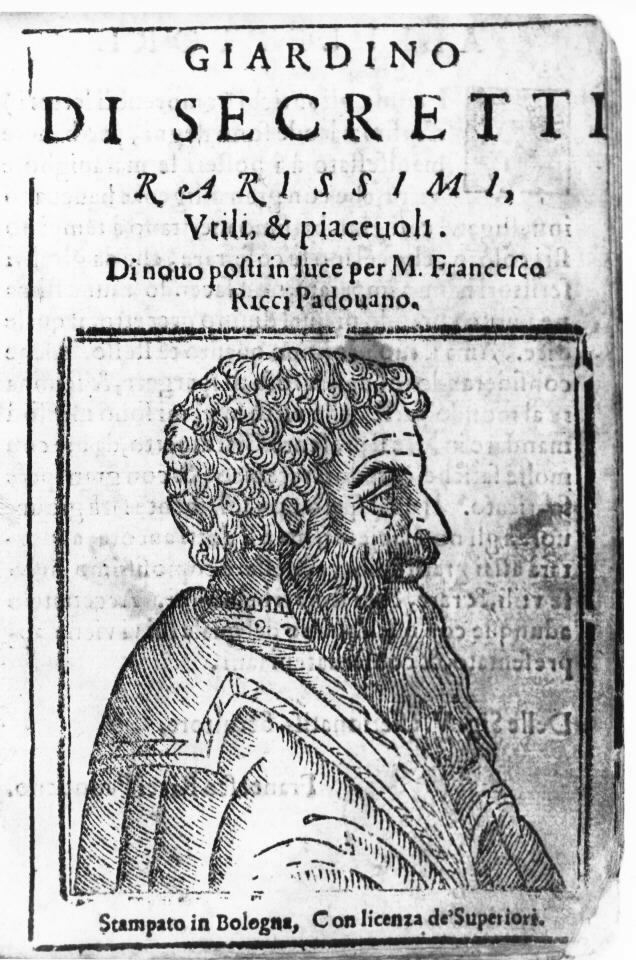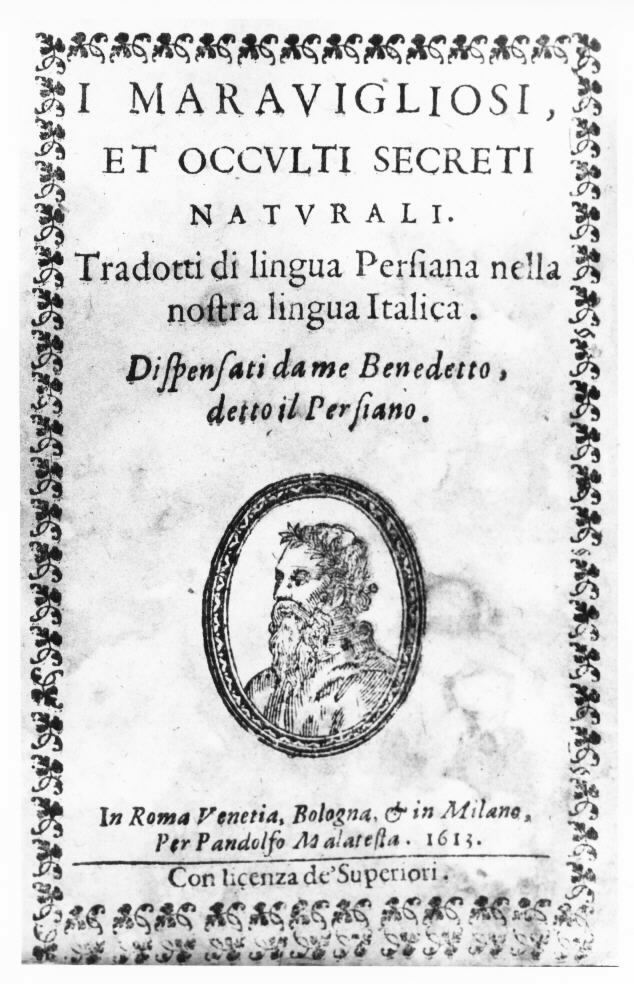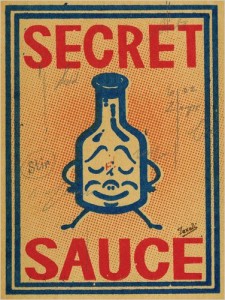Last weekend, “This American Life” host Ira Glass revealed what he claimed was the original formula for Coca-Cola. He found it buried in an article in the archives of The Atlanta Journal-Constitution. The recipe spread across the Internet, republished everywhere from CNN to Al Jazeera. The revelation of the secret—more valued than KFC’s famous “11 herbs and spices”—caused the radio show’s web site to crash under a stampede of visitors.
Everyone loves a secret, and everyone has a secret. We all, if we are cooks, have our favorite recipes, some being family secrets handed down through generations. Fishermen have secrets for making bait to catch more fish. On the web and in the self-improvement section of bookstores you can find secrets for beautiful hair and secrets to remove unwanted hair. Even though we love learning secrets, we love having secrets, too. We want to have our cake and eat it too.
Our fascination with secrets and secret recipes is hardly new. In the middle of the 16th century, Europe was suddenly awash in secret recipes. Among the most popular books in the first century of printing were the collections of recipes known as “books of secrets,” which began to stream from the presses in the mid-16th century and were printed continuously down to the 18th century. These fashionable works contained hundreds of medical recipes, household hints, and technical recipes on metallurgy, alchemy, dyeing, making perfume, oil, incense, and cosmetics—all retrieved by diligent experimenters and “seekers of the secrets of nature.” The books of secrets supplied practical information to a new middle-class readership, leading some historians to link them with the emerging secular values of the early modern period and to see them as contributing to the making of an “age of how-to.”

Francesco Ricci, "Garden of Very Rare, Useful, and Pleasant Secrets," one of the popular 'books of secrets' published in the mid-16th century
However, the books of secrets were not merely “how-to” books. They were also serious contributions to the study of natural philosophy, as science was then called. Underlying the books of secrets was the premise that nature was a repository of hidden forces that might be discovered and manipulated by using the right techniques. Unlike the recondite contemporary treatises on the occult arts, the books of secrets were grounded upon concrete, experimental trials. At the same time, books of secrets popularized the emerging experimental method and attitudes to the lay public.

Lorenzo Leandro, “Treasury of Various Secrets” (1614), a book of secrets ‘experimented with very great effort and expense of time and money.’
The most famous 16th-century book of secrets was an Italian work published in 1555 and attributed to Alessio Piemontese, titled I Secreti del reverendo donno Alessio Piemontese (“The Secrets of Alexis of Piedmont”). Alessio’s secrets included remedies unknown to the doctors, recipes for cosmetics used by the Turks, exotic perfumes and oils, dyeing techniques, tricks of the metalworking trades, and alchemical secrets tried out by Alessio himself. Like other collectors, he had always guarded his secrets carefully so that they wouldn’t be profaned by the common people. He revealed them now, he said, for the benefit of the world. Alessio’s Secrets went through more than a hundred editions and was still being reprinted in the 1790s.
As it turns out, the real author of this work was the humanist Girolamo Ruscelli, who wrote the Secrets under the pseudonym of Alessio Piemontese. Ruscelli reported that the work contained the experimental results of an “Academy of Secrets” that he and a group of humanists and noblemen founded in Naples in the 1540s. Ruscelli’s academy is the first recorded example of an experimental scientific society. The academy was later imitated—right down to the name—by Giambattista Della Porta, who formed an Accademia dei Secreti in Naples in the 1560s.
Alessio’s Secrets unleashed a torrent of books of secrets. So sensational were these works in their day that in 1585, the Augustinian monk and social critic Tommaso Garzoni identified them as making up a new literary genre and their authors as a new profession. In his compendious Piazza universale di tutte le professioni del mondo (“Universal Plaza of all the Professions of the World”), Garzoni called the new writers on secrets the “professors of secrets,” describing them as searchers after things “whose reasons are not so clear that they might be known by everyone, but by their very nature manifested only to a few.” Although the professors of secrets sometimes made bombastic claims, Garzoni admitted, their secrets were important because they “contain certain seeds of discovery, which lead the intellect to finding out whatever it seeks to know.”

“The Marvelous and Occult Secrets of Nature” (1613), supposedly translated from Persian into by ‘Benedetto the Persian,’ a book of secrets that capitalized on Europe’s fascination with exotic places.
Alessio Piemontese was the prototypical “professor of secrets,” and his book and the books that it spawned play a key role contributing to the emergence of the conception of science as a hunt for the secrets of nature. The concept of science as a hunt pervaded experimental science during the Scientific Revolution. Recent research suggests that the books of secrets played an important role in the emergence of early modern experimental science, acting as intermediaries between the private and esoteric “secrets” of medieval alchemists and magi and the public Baconian experiments that characterized the research programs of the Royal Society of London and other seventeenth-century experimental academies.
The secret of a recipe is its intellectual poverty. It requires little thought to understand one, little experience to employ one. Recipes collapse lived experience into a series of mechanical acts which, once parsed, anyone can follow. While a “secret” is someone’s private property or the property of a group, a recipe doesn’t belong to anyone. Once published, someone else appropriates it, uses it, varies it, then passes it on. At each stop it gains something or loses something, is improved upon or degraded, and is changed to fit new needs and circumstances. Recipes are built upon the belief that somewhere at the beginning of the chain there is someone who does not use them.
But are they science? The answer is not so simple. Of course, recipes are not explanations in the conventional sense. They do not formulate laws of nature. On the other hand, they are algorithms, or rules for making. Even if I cannot explain why something exists in terms of necessary causal laws, if in this chancy world I can make it every time, or nearly so, can it not be said that I know it?
BIBLIOGRAPHY
William Eamon, Science and the Secrets of Nature: Books of Secrets in Medieval and Early Modern Culture (Princeton, 1994).
William Eamon, The Professor of Secrets: Mystery, Medicine, and Alchemy in Renaissance Italy (Washington, 2010).
John K. Ferguson, Bibliographical Notes on Histories of Inventions and Books of Secrets, 2 vols. (London, 1959).
Tessa Storey, Italian Book of Secrets Database







An interesting example of the genre of “books of secrets” or “how to” books in the Jewish tradition is the recipe book composed by Hayyim Vital, the famous physician and Kabbalist from Safed who lived from 1542-1620. The book entitled “Kabbalah Ma‘asit we-Alkhimiyah” (Practical Kabbalah and Alchemy), extant in an autograph MS in the Musayoff collection, covers a wide variety of subjects, mostly in the form of practical recipes, in the fields of magic, medicine, technology, metallurgy and chemistry.
For an detailed discussion of this work and concrete examples of the recipes in these different fields see Gerrit Bos,
“Hayyim Vital’s Kabbalah Ma‘asit we-Alkhimiyah (Practical Kabbalah and Alchemy), a seventeenth century ‘Book of Secrets’,”Journal of Jewish Thought and Philosophy, vol. 4, 1994: 55-112.
Gerrit Bos
Thank you for this very interesting comment. I did not know about this text. I once commented (on the basis of the proliferation of books of secrets) that the 16th century in Europe might be called “the age of how-to” but books of secrets and “how to” books seem to be almost universal in cultures. Wherever there are recipes and techniques and literacy there are books of secrets. I enjoyed your web site.